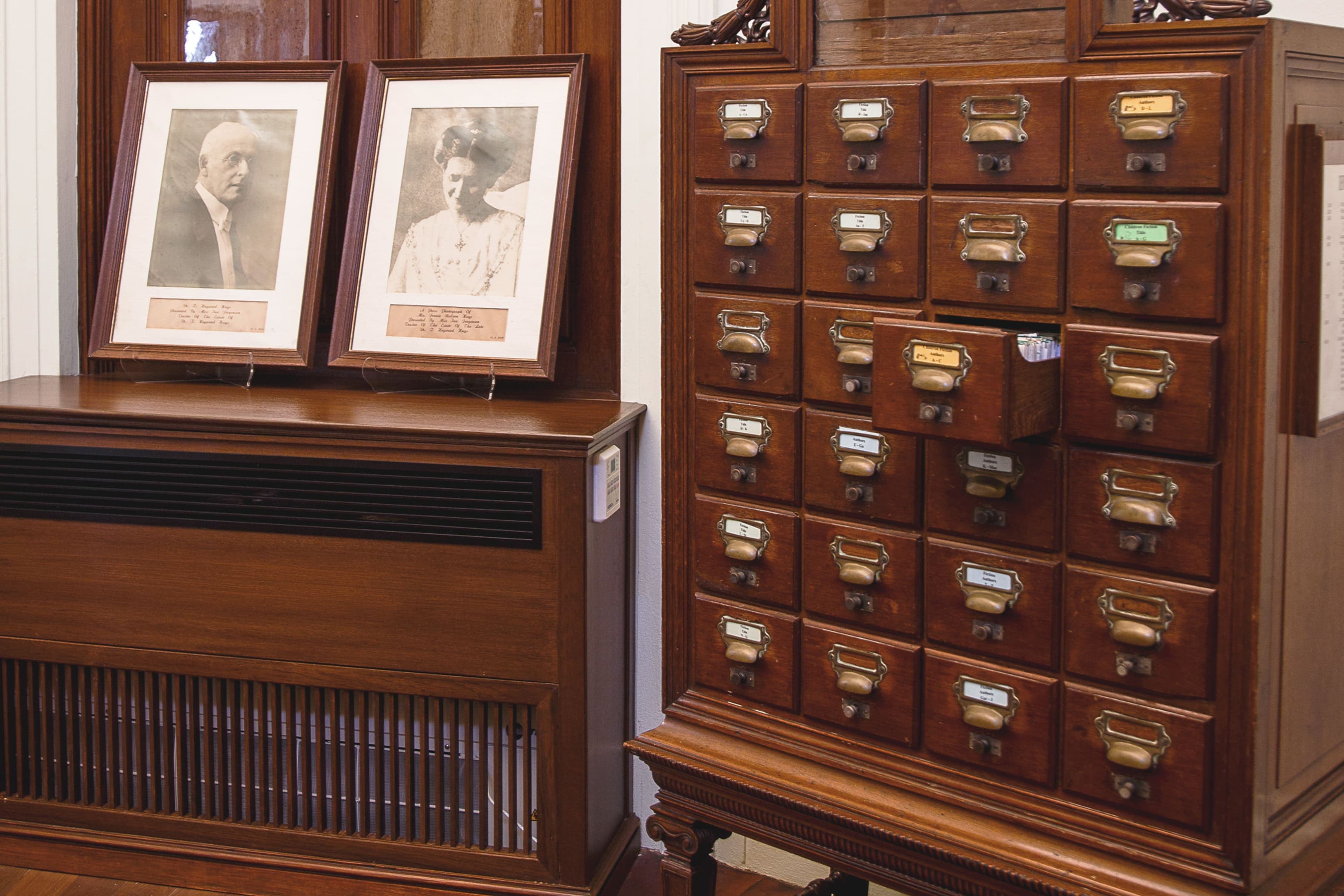
Our History
Every story has a beginning; this is ours…
A grand palace on a small scale
Daily life in Bangkok was very different in 1869 when the Bangkok Ladies' Library Association was first founded. Most of what is now today's modern city was then a lush network of swamps, khlongs and small settlements. Such would have been the case for the Silom (Windmill) area; Surawong Road itself was not to be built until later in 1897. At this time King Rama V was a young man, recently crowned and destined to lead Siam through many changes.
Life for early Western residents could be harsh. Devastating epidemics were frequent. Western luxuries such as books were treasured items; a precious connection with home. Until the opening of the Suez Canal, freight from Europe or America could take six months or more to arrive in the Kingdom of Siam.
Historical Gallery
A visual journey through the library's rich history, from its early days to the present
.jpg&w=828&q=75)
.png&w=828&q=75)
.webp&w=828&q=75)
.jpg&w=828&q=75)
.jpg&w=828&q=75)
.jpg&w=828&q=75)
.jpg&w=828&q=75)
.jpg&w=828&q=75)
Our Timeline
From humble beginnings to becoming one of Bangkok's most treasured cultural institutions
Foundation
Bangkok Ladies' Library Association founded by thirteen British and American women
Daily Operations
Library opens every day except Sunday with a paid librarian
Land Purchase
Plot of land purchased on Surawong Road for dedicated building
Jennie's Passing
Jennie Neilson Hays passes away, Dr. Hays decides to build library in her memory
New Building
Elegant neo-classical building opens on June 26th
Japanese Occupation
Library used for billeting troops, over 1,000 rare volumes shipped to Japan
ASA Architectural Conservation Award
Recognised as ASA Architectural Conservation Award from the Association of Siamese Architects under Royal Patronage
Historic Landmark
Building awarded "Historic Landmark" status by Association of Siamese Architects
Restoration Begins
Major restoration project launched to preserve the neo-classical architecture and historic collections
150 Years of Reading
Library celebrates 150th anniversary of its founding with special exhibitions and events
UNESCO Recognition
Neilson Hays Library awarded UNESCO Asia-Pacific Award of Merit for Cultural Heritage Conservation
UNESCO Recognition
Neilson Hays Library awarded UNESCO Asia Pacific Heritage Award of Distinction
Living Legacy
Continues to serve as a cultural and literary hub in Bangkok, welcoming locals and visitors alike
The Founders
Thirteen resourceful British and American women established the Bangkok Ladies' Library Association
Thirteen resourceful British and American women established the Bangkok Ladies' Library Association in 1869, with the aim of circulating and sharing books. Initially staffed by volunteers and only open one day a week, by 1897 it was open every day (except Sunday) and a paid librarian was employed. Originally housed rent-free in various personal homes (and later in a chapel), by 1914 it was clear that a dedicated building was required. A plot of land in Surawong Road was purchased.
Jennie Neilson Hays
Around this time, one of the most active Board members was Jennie Neilson. Danish by birth, she had lived in America and then entered Siam as a protestant missionary in 1884. Hearing that two suitable young American doctors were on their way to Bangkok, Jennie and a friend were said to have selected their respective future husbands prior to the gentlemen disembarking!
Dr Thomas Heyward Hays became Chief of the Royal Thai Navy Hospital. Jennie Neilson Hays served as President of the Library three times and was a mainstay of the organisation for twenty years.
A Gift of Love
Sadly Jennie passed away suddenly in 1920 – possibly as a result of cholera. Dr Hays chose to honour his wife by commissioning a new library to be built in her memory, using the plot of land purchased earlier. The result is our elegant neo-classical building; opened on 26 June, 1922.
The Architecture
Designed by Italian architect Mario Tamagno, this harmonious, symmetrical building
Designed by Italian architect Mario Tamagno, this harmonious, symmetrical building wisely incorporates practical features such as double walls to help keep the books well-ventilated and dry. It displays a wealth of classical features such as stucco decorative motifs, columns and teak fixtures and fittings. Numerous original details still survive; many are still in active daily use. The architectural highlight is a beautiful Italianate dome, once the imposing entrance and now a unique art gallery. At the time of its opening The Bangkok Times described the building as, “… a grand palace on a small scale”, and it remains so today.
Mario Tamagno
Mario Tamagno, in association with another Italian architect, Annibale Rigotti, also designed the prestigious Ananda Samakhom Throne Hall. An additional example of his work is Hua Lampong Railway Station, another impressive reminder of a past era.
Historic Recognition
The building was awarded the status of “Historic Landmark” in 1986 by the Association of Siamese Architects. As one of the few remaining examples of secular period architecture in Bangkok, it is to be hoped that the building will always be treasured by both the Thai and expatriate communities.
The Japanese Occupation
The Library thrived in its new and permanent home for many years, until a set-back in 1941 when the Japanese forces used it for billeting troops. More than 1,000 rare volumes were shipped to Japan during this time, along with precious architectural blueprints. Many books were subsequently returned, but some of the rarest books and blueprints are still missing.
With thanks to Mari Scott Miyashita (Sawasdee Magazine: Q1, 2010) and Eric Lim (http://www.tour-bangkok-legacies.com/neilson-hays-library.html) for much of the preceding information.